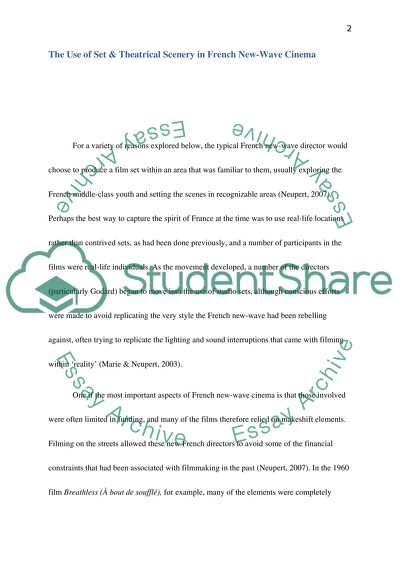Cite this document
(“The Use of the Set in French New Wave Cinema Research Paper”, n.d.)
Retrieved from https://studentshare.org/visual-arts-film-studies/1395674-the-use-of-the-set-in-french-new-wave-cinema
Retrieved from https://studentshare.org/visual-arts-film-studies/1395674-the-use-of-the-set-in-french-new-wave-cinema
(The Use of the Set in French New Wave Cinema Research Paper)
https://studentshare.org/visual-arts-film-studies/1395674-the-use-of-the-set-in-french-new-wave-cinema.
https://studentshare.org/visual-arts-film-studies/1395674-the-use-of-the-set-in-french-new-wave-cinema.
“The Use of the Set in French New Wave Cinema Research Paper”, n.d. https://studentshare.org/visual-arts-film-studies/1395674-the-use-of-the-set-in-french-new-wave-cinema.


